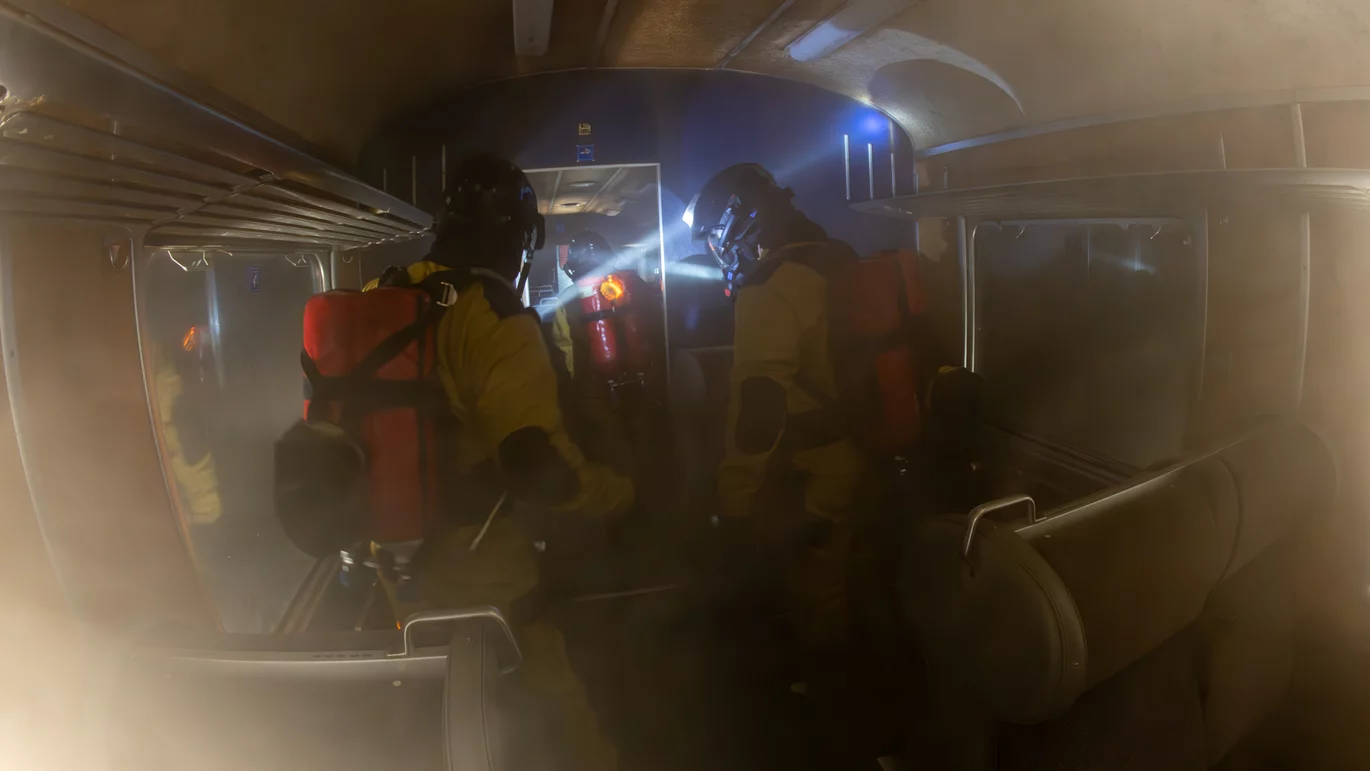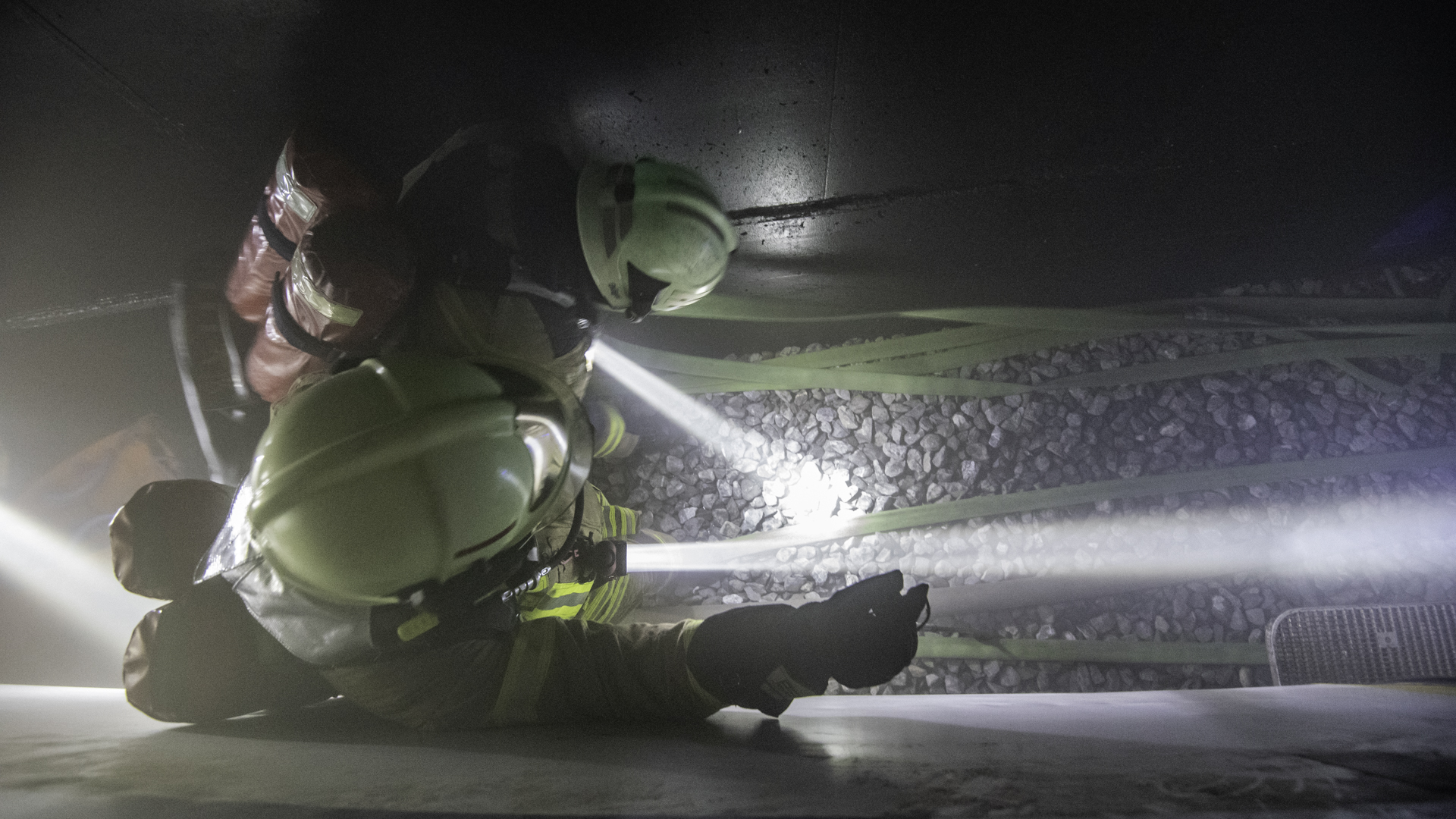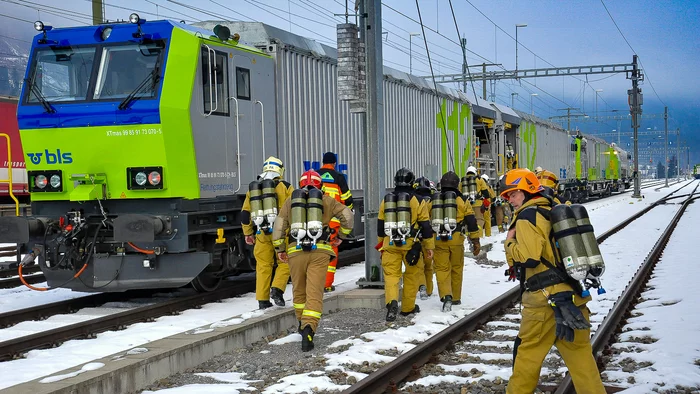In our railway tunnel tactic courses, we distinguish between required and effective penetration depths and specify different values for the upstream and downstream sides. Since this distinction can sometimes lead to misunderstandings, this magazine article provides a more detailed explanation of the key points.
The required penetration depth
The required penetration depth is defined as the distance from a safe area to the fire scene. Safe areas include, for example, smoke-free areas outside of the portals and emergency exits located outdoors, as well as positively pressurised escape tunnels, an unaffected neighbouring tunnel tube or the rescue vehicle of a fire and rescue train.

The effective penetration depth on the downstream side
On the downstream side, the effective penetration depth is the distance that firefighters with breathing apparatus can cover in smoke while adhering to safety rules. This value depends on the individual's breathing air consumption. The effective penetration depth varies depending on fitness and tasks, as well as the operational conditions, ranging from a few hundred to more than a thousand metres. As a rough guide to the penetration depth that can be achieved, the International Fire Academy states an average value of 500 metres when using double-cylinder breathing apparatus.

The effective penetration depth on the upstream side
On the smoke-free upstream side, firefighters proceed wearing their breathing apparatus but without donning their masks. Since they do not consume air from the cylinders, they could theoretically penetrate as far as they want into the tunnel in the smoke-free area. However, in most railway tunnels, there is a risk of a sudden airflow reversal. In this case, the firefighters must return through the smoke. It requires that the supply of breathing air in the cylinders is sufficient and that a safety reserve is in place. To ensure compliance with this requirement, the International Fire Academy recommends not entering a tunnel more than approximately 1,000 metres when using a double-cylinder breathing apparatus on the upstream side.
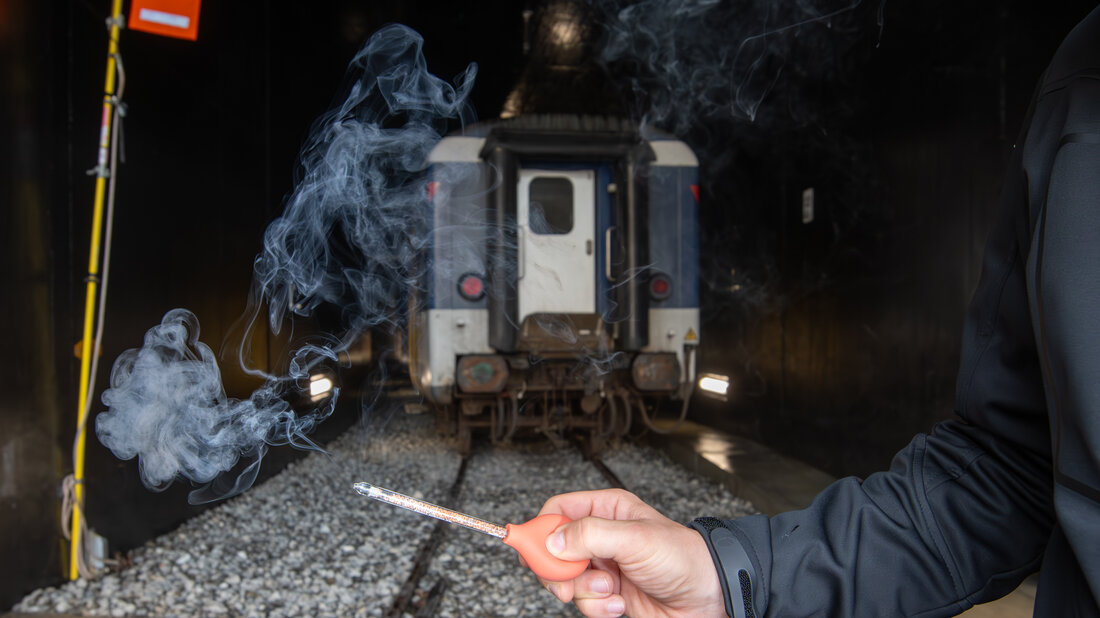
Monitor pressure gauges or look for escape route signs
The decisive factor for the withdrawal on the downstream side is the air consumption, which is indicated on the pressure gauge. However, when proceeding on the smoke-free upstream side, no air is consumed from the cylinders. Consequently, the pressure gauge cannot display consumption. Therefore, firefighters should orient themselves using the escape route signs, which usually indicate the way back to the safe room from which the team started or which it last passed.
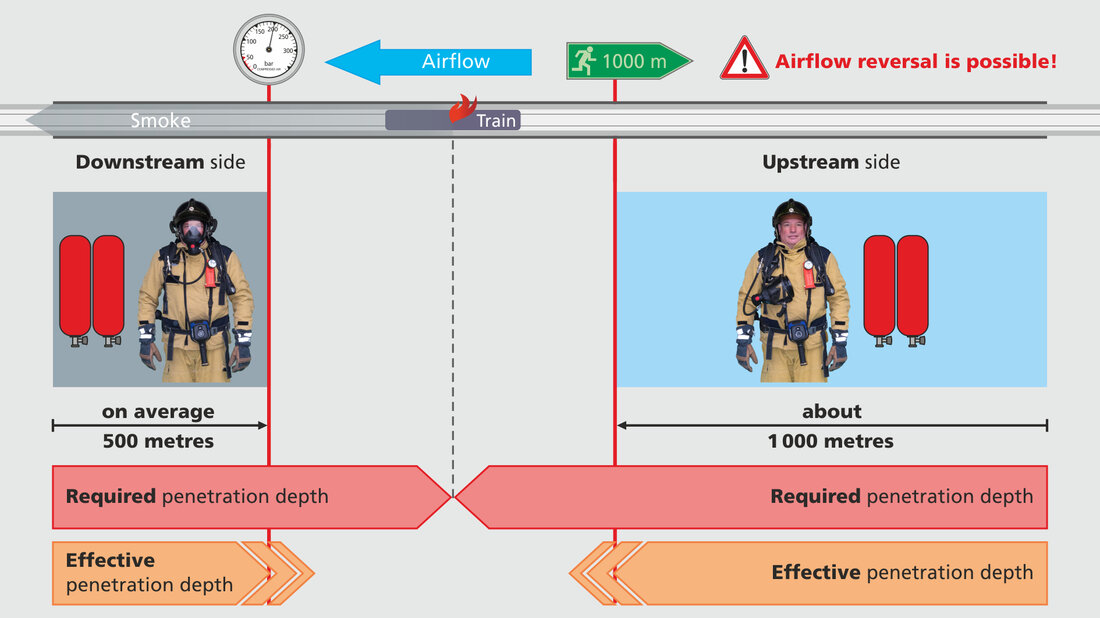
The average value is not a target or a requirement.
The effective penetration depth of 500 m on the downstream side is not a target value. A firefighting team does not have to achieve this value, nor does it mean that it must not exceed it. The only decisive factor is the actual air consumption. The effective penetration depth is an average value for tactical planning, indicating that an average of 500 metres can be achieved. In other words, if, for example, the required penetration depth is 2,000 metres, it should not be assumed that an average-performing team could advance that far without putting itself at risk.
Safety is the top priority
When defining the penetration depth on the smoke-free upstream side, the International Fire Academy was guided by safety considerations: A team should be able to cover 1,000 metres with two full breathing air cylinders each if it is surprised by smoke and has to retreat. Greater penetration depths may be possible, but they involve greater risks and, in any case, greater physical and psychological stress for the firefighters.
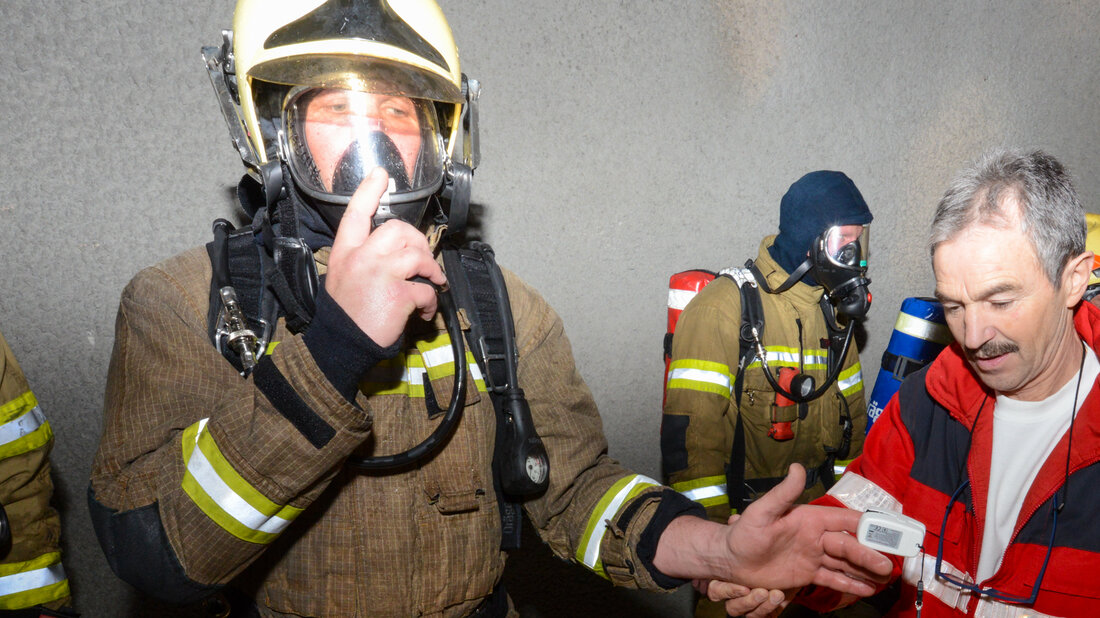
Real life shows: More is possible
Current tests conducted by the Thuringian State Fire Service and Disaster Management School show that significantly higher penetration depths can be achieved in real life on the upstream side. The Didactics and Development Team at the International Fire Academy will work closely with their colleagues in Thuringia to determine which recommendations can be derived from this. However, it has already been confirmed that the values stated in this magazine article are not too high.


